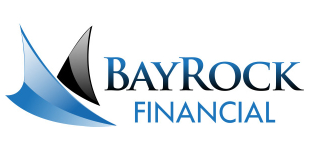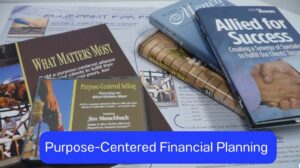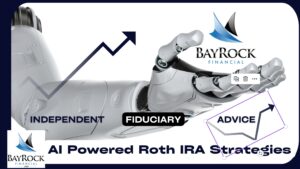Exit Planning Strategies
Crafting A Legacy: Exit Planning and Succession with Vision, Values, and Purpose
In a bustling city, two iconic stores stood side by side, each symbolizing a distinct approach to business legacy. Robert of “Marshall & Sons” sought prospective buyers for his business, enchanted by the idea of an alluring payout. Peter, on the other hand, led “Donovan Family Jewelers” with a clear vision. Rather than potential buyers, he groomed his children, instilling in them values, vision, and purpose. As time unfurled its tapestry, Robert’s business dwindled and lost its individuality, while Peter’s legacy flourished, standing as a monument to his meticulous planning and foresight.
Every business owner stands at this crossroad: Which path to follow? Should you go the traditional route, focusing on immediate gains, or opt for a value-driven approach, ensuring a lasting legacy?
The Traditional Approach:
Exit Planning Strategies with Legacy in Mind
This method involves a meticulous step-by-step process, ensuring you get the maximum value for your business:
-
Begin with the End in Mind: Visualize the final picture.
-
Engage Stakeholders: Keep communication channels open and transparent.
-
Conduct a Business Valuation: Know your worth.
-
Build a Succession Plan: Groom potential successors.
-
Optimize Business Operations: Streamline for profitability.
-
Consult Professionals: Gain insights from those in the know.
-
Draft an Exit Strategy: Plan the specifics.
While effective, this approach can sometimes lack a personal touch. The transition might be smooth, but does it always preserve the heart and soul of the business?
The Visionary Approach: Succession Planning Grounded in Vision, Values, and Purpose
This process brings a more personalized touch, ensuring that the business continues to reflect its core principles:
-
Clarify the Owner’s Vision: Dive deep into what you envision for the future.
-
Define Core Values: Prioritize principles over profits.
-
Identify Purpose Beyond Profit: Understand your larger impact.
-
Select Potential Successors: Choose leaders who resonate with your values.
-
Customized Leadership Training: Personalized growth and development.
-
Engage Stakeholders in the Transition: Foster collaborative engagement.
-
Implement a Mentorship Program: Facilitate hands-on knowledge transfer.
-
Review and Adjust: Stay agile and adaptable.
-
Formalize the Succession: Legalities and documentation.
-
Celebrate the Transition: Honor the past, welcome the future.
Contrasting the Two Exit Planning Strategies
Focus: Traditional Exit Planning Strategies often revolves around financial metrics, valuations, and market trends. The visionary approach, while not neglecting these aspects, places a strong emphasis on intangible aspects such as culture, values, and long-term vision.
Stakeholder Engagement: In the traditional model, stakeholders are engaged more towards the end, when decisions have been made. In the visionary model, they are woven into the fabric of the entire process, ensuring alignment from the get-go.
Succession: Traditional Exit Planning Strategies might prioritize expertise, market knowledge, or financial acumen in successors. The visionary model, while valuing these traits, also considers alignment with the company’s core values and vision.
Whether you resonate with Robert’s methodical exit strategy or Peter’s vision-driven succession planning, the choice boils down to what you envision for your business. Do you want a swift, profitable transition? Or do you aim for a lasting legacy grounded in values, vision, and purpose? Whatever path you choose, it’s essential to approach it with foresight, preparation, and a clear understanding of your end goal. After all, your business isn’t just an enterprise; it’s a legacy that you leave behind. Choose wisely.
Funny Tweets About Vision-Based Exit Planning
-
“Thinking of selling the family business? Why not pass it to junior? Might save you from those awkward dinners 🍗😅 #PassTheBusinessNotTheSalt”
-
“Traditional exit planning got me like 😴. Vision-based exit planning? Now that’s the 🌶️! #ExitWithAFlair”
-
“If your business Exit Planning Strategies were a movie 🍿, would it be a drama or a comedy? Vision-based planning for the Oscar! 🏆#HollywoodExit”
-
“🕺: How do I make an epic business exit?
🤓: Ever tried vision-based planning?
🕺: Say no more! 🚀 #EpicBusinessMoves” -
“When traditional Exit Planning Strategies says ‘exit’, but your heart says ‘legacy’ ❤️👑. #LeaveALegacyNotAnExitSign”
-
“Trying to pass your business on? Vision-based planning is like giving the baton in a relay. The traditional approach? More like a game of hot potato 🥔🔥😂 #DontDropIt”
-
“🐌: Slow and steady with traditional planning.
🚀: Sky’s the limit with vision-based exit planning!
#RaceToTheExit” -
“The only exit I’m planning is from bad advice 🚪💨. Going all-in on vision-based strategies! 🌈🚀 #ExitLikeAPro”
-
“When the next gen asks how to keep the business legacy alive, don’t just hand them a manual. Hand them a vision 🌟 #LegacyGoals”
-
“Traditional exit planning is like using a flip phone in 2023. Upgrade to vision-based! 📱✨ #StayUpdated”
-
“Family business talk over dinner:
Dad: How’s the exit plan?
Me: Ever heard of vision-based? 🚀
Sis: Ever heard of passing the potatoes? 🥔😅 #DinnerTableDecisions” -
“Choosing between traditional Exit Planning Strategies & vision-based exit planning? One is like black & white TV 📺, the other’s 4K HD! 🌈 #UpgradeYourExit”
-
“Succession planning should come with vision, not just a retirement plan. Why? ‘Cause legacies aren’t built on golf courses! 🏌️♂️😂 #SwingForTheFuture”
-
“Why make an ordinary exit, when you can make it extraordinary with a vision? 🌠#BeyondTheExitSign”
-
“Setting the ‘bar’ in exit ‘bar’ strategy high with vision-based planning! 📊🚀 #RaiseTheBarNotTheExitSign”
-
“Why be a ‘business selling’ star when you can be a ‘legacy creating’ superstar? 🌟👑 #ShineBrightLikeALegacy”
-
“Exit planning without vision is like pineapple on pizza 🍕🍍. Controversial and not for everyone! 😜 #PizzaAndPlans”
-
“For every time someone mentions traditional Exit Planning Strategies, take a sip of your coffee ☕. For vision-based, add a sprinkle of glitter ✨. #ExitPlanBingo”
-
“Vision in exit planning is the new black. Timeless, classy, and oh-so-smart! 🖤👓 #TrendyTransitions”
-
“If business exit plans had a flavor, traditional would be vanilla, and vision-based? Rainbow sherbet! 🍨🌈 #TasteTheLegacy”
-
“Did someone say vision-based succession? Hold my calculator 📟! #CountMeIn”
-
“Succession planning: Traditional vs Vision-based is like comparing apples to apple pies. One’s just way tastier! 🍏🥧 #SweetSuccession”
-
“Next time someone asks about your business Exit Planning Strategies, wink 😉 and say, ‘Ever heard of vision-based?’ #MicDrop”
-
“A vision in exit planning is worth a thousand spreadsheets. Yes, I said it. 📈🌟 #BeyondTheNumbers”
-
“The traditional approach leaves the building. Vision-based exit planning enters with sunglasses and a fanfare! 🕶️🎺 #MakingAnEntrance”
Exit Plan FAQs for Business Owners
-
What is an Exit Plan?
An Exit Plan is a comprehensive strategy designed to allow business owners to transition out of their company, whether by selling, passing it on, or other means, ensuring they meet their personal, financial, and business goals. -
Why do I need an Exit Plan?
Every business owner will leave their business someday. An Exit Plan ensures this transition occurs smoothly, maximizes business value, and helps meet retirement or post-business-ownership goals. -
When should I start planning my exit?
The best time to start is as early as possible, often 5-10 years before you actually plan to leave, to ensure ample preparation and value maximization. -
Can I handle the Exit Planning Strategies myself?
While business owners have deep insights into their businesses, a successful exit often requires a team of experts, from financial advisors to legal experts, to ensure a comprehensive and effective plan. -
How does Exit Planning Strategies differ from Succession Planning?
Exit Planning focuses on the owner’s exit from the business. Succession Planning focuses specifically on identifying and preparing successors to take over the business roles. -
What factors determine the value of my business during an exit?
Several factors, including current profitability, growth potential, market conditions, competition, and the state of company records and systems. -
How can I maximize the value of my business before exiting?
Strategies include streamlining operations, diversifying customer bases, resolving outstanding disputes, and maintaining meticulous financial records. -
Is selling the business my only exit option?
No, there are numerous options: selling to a third party, passing to family members, selling to employees, merging, or even liquidating, among others. -
How do I decide the best Exit Planning Strategies for me?
Consider your personal goals, financial needs, the state of your business, market conditions, and seek advice from exit planning professionals. -
What if I don’t want to fully retire after my exit?
Many business owners choose a phased exit, gradually reducing their involvement, or take on advisory roles post-exit. -
How can I ensure a smooth transition during my exit?
Comprehensive planning, clear communication, training successors, and perhaps even staying on in a limited capacity temporarily can ease the transition. -
How long does the exit process usually take?
It varies but can take anywhere from a few months to several years, depending on the exit strategy and business complexity. -
What challenges should I expect during my exit?
Potential challenges include market fluctuations, changing business valuations, emotional attachments, and finding suitable buyers or successors. -
Can I change my mind after starting the exit process?
Depending on the stage and commitments made, changes can be challenging. It’s essential to be certain before making irreversible decisions. -
How do taxes impact my exit?
Taxes play a crucial role, especially regarding the sale’s net proceeds. It’s vital to work with a tax expert to understand and optimize tax implications. -
How do I choose an exit planning consultant or team?
Look for experienced professionals with a track record in your industry, and ensure they understand your personal and business goals.
Succession Planning FAQs: Rooted in Vision, Values, and Purpose
-
What is Vision, Values, and Purpose-driven Succession Planning?
It’s a succession strategy emphasizing the foundational ethos and guiding principles of a business, ensuring its future aligns with these pillars rather than just operational and financial continuity. -
How is this different from a traditional succession plan?
While traditional plans focus primarily on fiscal and operational continuity, this approach prioritizes the company’s inherent beliefs, guiding mission, and cultural touchstones. -
Why should I choose this approach over the traditional Exit Planning Strategies?
By aligning your succession plan with your core beliefs, the transition is more likely to retain the business’s unique identity, ensuring sustainability and brand integrity. -
Isn’t succession planning all about finding a successor?
While finding the right successor is essential, the process ensures that this person embodies and champions your business’s heart and soul. -
How do I begin crafting a Vision, Values, and Purpose-driven plan?
Start by clearly defining your company’s Vision, Values, and Purpose. Reflect on why the business began, its core principles, and its envisioned future. -
What if my family members don’t align with my Vision, Values, and Purpose?
Open communication is key. Workshops or family business consultants can help bridge understanding and ensure alignment or explore alternative successors who resonate with the business’s core. -
How long does this process take compared to traditional planning?
Both processes require time and consideration. However, this method may need additional reflection and communication to ensure alignment across all involved. -
How do I ensure the continued emphasis on Vision, Values, and Purpose after succession?
Regular training, open dialogues, and revisiting these core pillars can create a culture where these principles are continually reinforced. -
How do employees factor into this approach?
Engaging employees in understanding and championing the company’s Vision, Values, and Purpose is crucial. Their buy-in ensures smoother transitions and sustained company culture. -
Can I still use advisors and consultants with this approach?
Absolutely. Ensure they understand and value this approach to offer aligned advice and strategies. -
If the market or industry changes, can the Vision, Values, and Purpose evolve too?
Core principles can remain constant while strategies evolve. It’s essential to ensure the business remains relevant while staying true to its foundational ethos. -
How will this approach impact the valuation of my business?
While financial metrics are critical, a company deeply rooted in its Vision, Values, and Purpose can command higher loyalty from customers and employees, potentially leading to increased intangible value. -
Does this method apply only to certain industries or business sizes?
No, businesses of all sizes and sectors can benefit from succession planning that’s rooted in their inherent Vision, Values, and Purpose.
Incorporating Vision, Values, and Purpose into your succession plan doesn’t just prepare the business for the future; it ensures the heart and soul of the company remain intact through transitions and beyond.
| Main Point | Question? | Answer |
|---|---|---|
| Traditional Approach: Legacy in Mind | ||
| Planning Approach | What’s the first step in traditional exit planning? | Begin with the end in mind: Visualize the final picture. |
| Stakeholder Communication | How are stakeholders involved in traditional planning? | Engage stakeholders: Keep communication channels open and transparent. |
| Business Worth | How to determine the business’s value in traditional planning? | Conduct a Business Valuation: Know your worth. |
| Succession Process | What’s the main focus of succession in the traditional approach? | Build a Succession Plan: Groom potential successors. |
| Operational Efficiency | How do you improve profitability in traditional planning? | Optimize Business Operations: Streamline for profitability. |
| Professional Consultation | What’s the role of experts in traditional exit planning? | Consult Professionals: Gain insights from those in the know. |
| Exit Strategy | How do you outline the transition process in traditional planning? | Draft an Exit Strategy: Plan the specifics. |
| Transition Qualities | Does the traditional approach always preserve the business essence? | It might be smooth but might not always preserve the heart and soul of the business. |
| Visionary Approach: Vision, Values, Purpose | Vs Exit Planning Strategies | vs Exit Planning Strategies |
| Owner’s Vision | What starts the visionary approach? | Clarify the Owner’s Vision: Dive deep into what you envision for the future. |
| Business Principles | What gets prioritized over profits in the visionary approach? | Define Core Values: Prioritize principles over profits. |
| Business Impact | How does the visionary approach see beyond profit? | Identify Purpose Beyond Profit: Understand your larger impact. |
| Successor Selection | How are successors chosen in the visionary model? | Select Potential Successors: Choose leaders who resonate with your values. |
| Leadership Training | How is leadership training tailored in the visionary approach? | Customized Leadership Training: Personalized growth and development. |
| Stakeholder’s Role | When are stakeholders engaged in the visionary approach? | Engage Stakeholders in the Transition: Foster collaborative engagement throughout the process. |
| Knowledge Transfer | How is expertise shared in the visionary model? | Implement a Mentorship Program: Facilitate hands-on knowledge transfer. |
| Business Flexibility | How does the visionary model ensure adaptability? | Review and Adjust: Stay agile and adaptable. |
| Formalizing Succession | What’s the last administrative step in the visionary approach? | Formalize the Succession: Legalities and documentation. |
| Celebrating the Transition | How does the visionary approach mark the transition? | Celebrate the Transition: Honor the past, welcome the future. |
| Contrasting the Two Approaches | ||
| Planning Focus | What does traditional exit planning revolve around compared to the visionary approach? | Traditional focuses on financial metrics, valuations, and market trends while the visionary emphasizes intangible aspects like culture, values, and long-term vision. |
| Stakeholder Timing | When are stakeholders involved in both models? | In traditional, they’re engaged towards the end; in the visionary, they’re integral from the start. |
| Choosing Successors | How do successor criteria differ between the models? | Traditional prioritizes expertise, market knowledge, or financial acumen, while visionary values alignment with company’s core values and vision. |
| Final Consideration | What’s the essential consideration in choosing an approach? | Your vision for your business: a swift, profitable transition or a lasting legacy grounded in values, vision, and purpose. |
Exit Planning Strategies and Images used in the Video




















